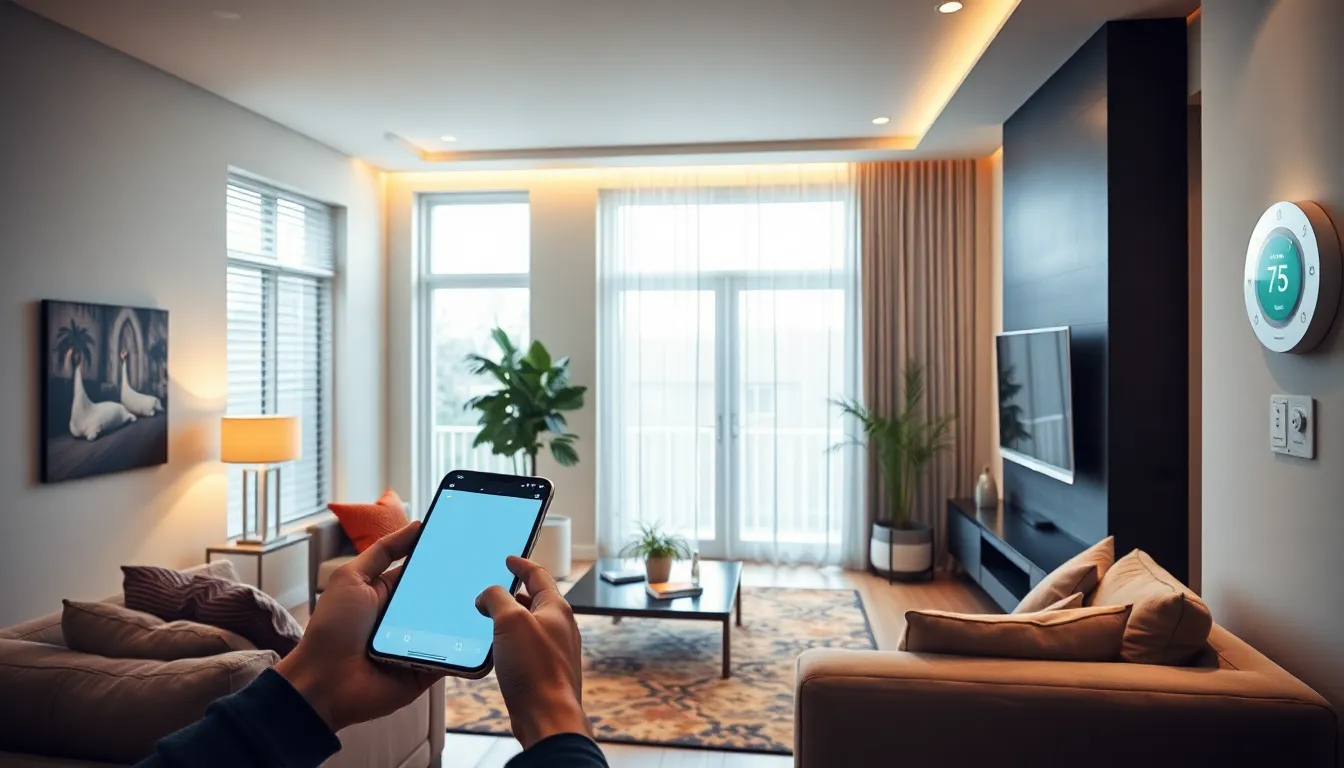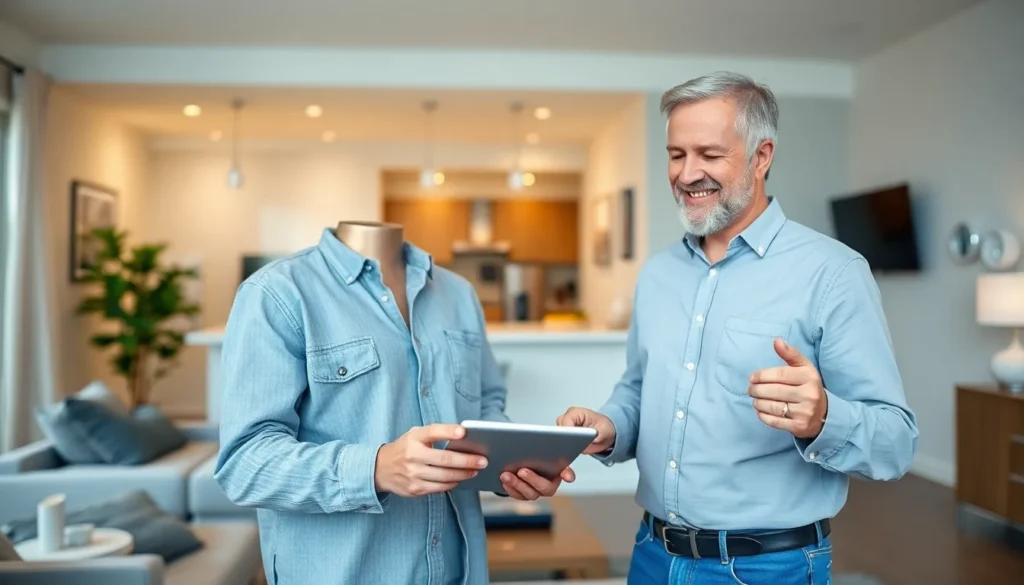Home automation is transforming the way people live, making everyday tasks simpler and more efficient. With smart devices becoming increasingly accessible, homeowners are eager to embrace technology that enhances convenience, security, and energy savings. Navigating this digital landscape can be overwhelming, but the right guidance can unlock the full potential of a connected home.
From smart lighting systems to advanced security solutions, home automation offers endless possibilities. This article delves into essential guides that will help anyone seamlessly integrate smart technology into their living spaces. Whether you’re a tech novice or a seasoned enthusiast, these insights will empower you to create a home that works for you, not the other way around.
Table of Contents
ToggleOverview of Home Automation
Home automation enables the control of household functions through smart devices. These devices range from smart thermostats to lighting systems, security cameras, and voice-activated assistants. Homeowners can manage these elements remotely via smartphones or tablets, enhancing convenience and efficiency.
Common benefits of home automation include:
- Security: Smart locks and cameras allow for real-time monitoring. Notifications can alert homeowners to unusual activities.
- Energy Efficiency: Smart thermostats adjust heating and cooling based on usage patterns, potentially reducing energy bills by up to 15%.
- Convenience: Routine tasks, such as turning off lights or locking doors, can automate through scheduling or voice commands.
- Integration: Different smart devices often work together, enabling cohesive control through central hubs or apps.
Understanding these aspects helps homeowners assess their requirements. Starting small with a single device can lead to gradual integration of more advanced systems. Familiarity with home automation terminology and functions makes selecting appropriate solutions easier.
Types of Home Automation Systems

Home automation systems enhance convenience, security, and energy efficiency. Several types exist, each serving different needs and preferences.
Smart Lighting Solutions
Smart lighting solutions allow homeowners to control lights remotely through smartphone apps or voice commands. Users can set schedules, adjust brightness levels, and change colors. Many systems integrate with motion sensors, turning lights on or off automatically based on occupancy. Energy-efficient LED bulbs paired with smart technology can reduce lighting costs by up to 80%. Popular options include Philips Hue and LIFX.
Home Security Automation
Home security automation provides real-time monitoring and alerts for residential properties. This system includes components like security cameras, doorbell cameras, motion detectors, and smart locks. Users can view live footage or receive notifications via mobile devices. Many products integrate with home assistant systems for voice control. Some security systems also allow remote control of locks, ensuring safety from anywhere. Brands such as Ring and Arlo lead the market in home security solutions.
Climate Control Systems
Climate control systems manage heating and cooling efficiently. Smart thermostats, like Nest and Ecobee, learn user habits and adjust temperatures accordingly, potentially lowering energy bills by up to 15%. Users can schedule temperature changes or control systems remotely via apps. Integration with other smart home devices, such as sensors and air quality monitors, optimizes comfort. Automated window treatments can also enhance climate control by blocking or allowing sunlight based on temperature preferences.
Benefits of Home Automation
Home automation offers numerous advantages, significantly improving daily living. These benefits encompass energy efficiency, convenience and comfort, and enhanced security measures.
Energy Efficiency
Home automation optimizes energy use, contributing to substantial savings. Smart thermostats adjust heating and cooling based on user patterns, potentially reducing energy bills by 10% to 15%. Smart lighting systems can decrease energy consumption by up to 80%, allowing homeowners to manage lights remotely and set schedules. These advancements promote sustainable living while directly impacting household expenses.
Convenience and Comfort
Home automation streamlines daily tasks, offering unparalleled convenience and comfort. Automated systems enable control over home devices through smartphones or voice commands. Tasks like adjusting lighting, regulating temperature, and managing appliances occur seamlessly. Scheduling routines for different times enhances comfort, ensuring environments remain pleasant without manual effort.
Enhanced Security
Home automation significantly improves home security. Real-time monitoring through smart cameras alerts homeowners to unusual activity. Smart locks provide added security by offering keyless entry options. Homeowners can monitor their property remotely, receiving instant notifications and ensuring peace of mind when away. Enhanced security features reduce risks and elevate the overall safety of living spaces.
Popular Home Automation Devices
Home automation devices enhance convenience, security, and energy efficiency. Below are some of the most popular devices homeowners integrate into their smart homes.
Smart Speakers
Smart speakers offer voice-controlled assistants that respond to commands for music, weather updates, and home automation tasks. Devices such as Amazon Echo and Google Nest Hub enable users to control other smart devices hands-free. They support various voice commands, allowing seamless integration with smart lighting, thermostats, and security systems. Users can enjoy features like multi-room audio and routine automation by grouping devices together.
Smart Thermostats
Smart thermostats, like the Nest Learning Thermostat and Ecobee SmartThermostat, optimize heating and cooling based on user behavior. These devices can learn preferences over time and adjust settings automatically, leading to potential savings of up to 15% on energy bills. Homeowners can control their thermostat remotely via smartphone apps, ensuring comfort and efficiency, even when away from home. Some models offer energy usage reports, enabling informed decisions about heating and cooling patterns.
Security Cameras
Security cameras, including options like Ring and Arlo, provide real-time monitoring of home environments. Many models come equipped with features such as motion detection, night vision, and two-way audio, allowing homeowners to communicate with visitors. Users can receive alerts on their smartphones when unusual activity is detected. Additionally, cloud storage options enable the retention of video footage for future reference, enhancing home security and peace of mind.
Embracing home automation can significantly elevate everyday living. By integrating smart devices into their homes, individuals can enjoy a new level of convenience and security while also achieving energy efficiency. The journey may seem daunting at first, but with the right guidance, anyone can navigate the world of smart technology with ease.
Starting with one device and gradually expanding the system allows for a more manageable transition. Understanding the terminology and options available empowers homeowners to make informed decisions that align with their unique needs. As technology continues to evolve, the potential for creating a truly connected home is limitless.





